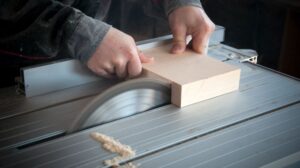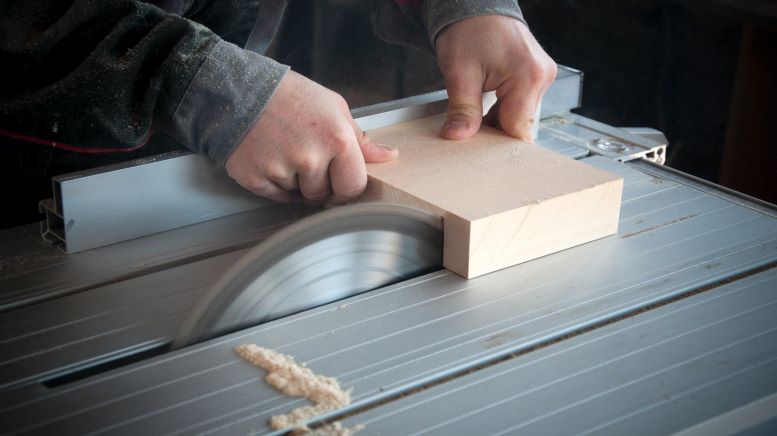Whether your house has sustained serious damage or minor damage and selling a fire-damaged house, some of the key choices you’ll need to make when repairing or rebuilding a fire-damaged house is the type of wood that is used.
The truth is there are hundreds of kinds of woods available for a fire-damaged house rebuild and each tree has its own characteristics and properties.

So, it is very important for you to learn about the types of woods, their characteristics and properties so that you can have an informed discussion with your contractor.
Being informed about the different types of woods can also benefit you if you want to try to do the repairs yourself. So let’s take a closer look at the many varieties of wood that are available today.
Types of Woods
There are two general types of wood – softwood and hardwood. Both of these kinds of wood have their own individual characteristics and properties.
Hardwoods
These woods come from deciduous trees that shed off leaves in autumn. Oak, maple, cherry, birch, walnut, ash and poplar come in this category.
Working with hardwoods is very different and more complex than working with softwoods.
You simply cannot drive a screw in these trees. You need to drill a hole first. Very sharp tools are used for creating hardwood furniture. These trees have pores on the surface just like human skin. Hardwood is further classified into closed-grain wood and open-grain wood due to the pores.
Cherry, maple, birch and poplar are included in the category of closed-grain woods. They have very small pores on the surface, which are difficult to notice, but that help provide a uniform and consistent surface throughout the board.
Poplar is hardly used for making furniture or other fire-damaged house repairs that require a very clear and smooth finish because of its unusual coloration. However, it is at its best when stained, and is widely used in framing hardwood projects, as it is inexpensive.
Oak and ash, categorized as open-grain woods, play a crucial role in context of fire-damaged house rebuild. Their large pores pose challenges in achieving a uniform surface on boards. Staining, especially in furniture restoration for such houses, can result in uneven coloring due to wood variation. Understanding wood reactions to finishes is key to successful restoration.
Softwoods
These woods are from coniferous or evergreen trees. Every softwood tree has very small pores on the surface, which are also difficult to notice.
Cedar, fir, pine, redwood, hemlock and spruce are included in this category. These trees are usually used in home construction. Most of the softwoods are unstable unlike hardwoods as they absorb and lose moisture readily. For outdoor projects, cedar and redwood are the best choices while pine is generally used for home furniture.
Manufacturing Panels
There is another type of wood which is known as manufacturing panel. They are inexpensive compared to hardwoods and softwoods. They give a very regular and constant texture all over the board due to their laminated construction. As the veneer or layer of the manufacturing panel is usually derived from the same log, a panel can give uniform color and constant grain.
You can get manufacturing panels in a wide range of surface cover or veneering glued to various panel cores, which is particularly relevant in the context of a fire-damaged house rebuild. Most manufacturing panels use hardwoods as outer veneers. Since veneers are very thin sheets of wood, they are usually used for cabinet construction, architectural, and furniture work – all essential components in the process of rebuilding a fire-damaged house. The use of manufacturing panels not only ensures durability but also contributes to the aesthetic appeal of the furniture and fixtures in your home, making them a popular choice for creating beautiful and successful furniture in a fire-damaged house rebuild project.
Some Properties of Woods
Density:
Very heavy woods such as oak are characterized by heavy weight and close-grain. They resist scratches, tears and hollows. They are far better than the softwoods.
Texture:
It refers to the surface and the consistency of the wood. It determines the finishing work of the project. Woods having small pores maintain regular and consistent surface on the finished work.
Color:
The beauty of furniture depends on the coloration. It determines the personality of the wood.
Grade:
It is based on the number, position and size of defects on the board. Clear wood will merit a higher grade. Remember, grade is not determined by the strength of the wood alone.
Stability:
It refers to the quality of wood to remain stable before or after the work without room for expansion or contraction.
Grain:
It is also a natural characteristic of wood. Close-grain wood gives a regular and consistent surface on the finished work unlike the open-grain woods.
Types of Grain
The consistent and uniform texture on a board depends on the grain of the wood. The density of grain will determine the strength of the wood. Wood that has a tight pattern is stronger than the one that has a loose pattern.
Also, two boards of a same species can look different due to different grain patterns. Thus, grain can give a tremendous impact and plays a very important role in fire-damaged house repairs. Grains are broadly divided into six types:
- Diagonal grain: It is formed when a straight-grain log is not sawed along its vertical axis.
- Spiral grain: It is formed when trees are grown twisted.
- Straight grain: It runs parallel near the vertical axis of the log.
- Wavy grain: It is formed when the direction of wood fibers is regularly changed.
- Irregular grain: Boards having irregular grain have fibers at the direction that is different and irregular from the vertical axis.
- Interlocked grain: Those trees whose fibers run in opposite directions in each growth year will form this type of grain.
Durability:
Durable woods have the potential to resist surplus moisture, which is the main cause of decaying.
Defects:
You cannot lay blame on wood defects. Very often, defected wood inspires woodworkers to design a completely new and marvelous piece of work.
Some Common Wood Defects
- Bow: It is a twist or bending of the board from one side of the surface to the end of other side
- Cup: It is the concave or hollow formation across the face of the board
- Crook (crown): It is a bending along the edge line of the board
- Check: It is a crack or split along the wood’s annual growth rings. A crack does not pass through the whole wood
- Knot: A loose hole may fall down leaving the board empty while a tight hole will not fall down from the board
- Split: Unlike the check, here the crack passes through a piece of whole wood
- Twist: It is not a single but numerous bends on the face of the board
- Wane: Very often, we see untrimmed or untidy bark along the edge of the wood. It is called wane
Prefer to skip the wood selection and repair process?
You can sell your fire-damaged house in as is condition to We Buy Fire Damaged Houses. Simply fill out the form below to see if your home qualifies for a free quote.
Photo by Blaz Erzetic on Unsplash

